LUSOSPACE
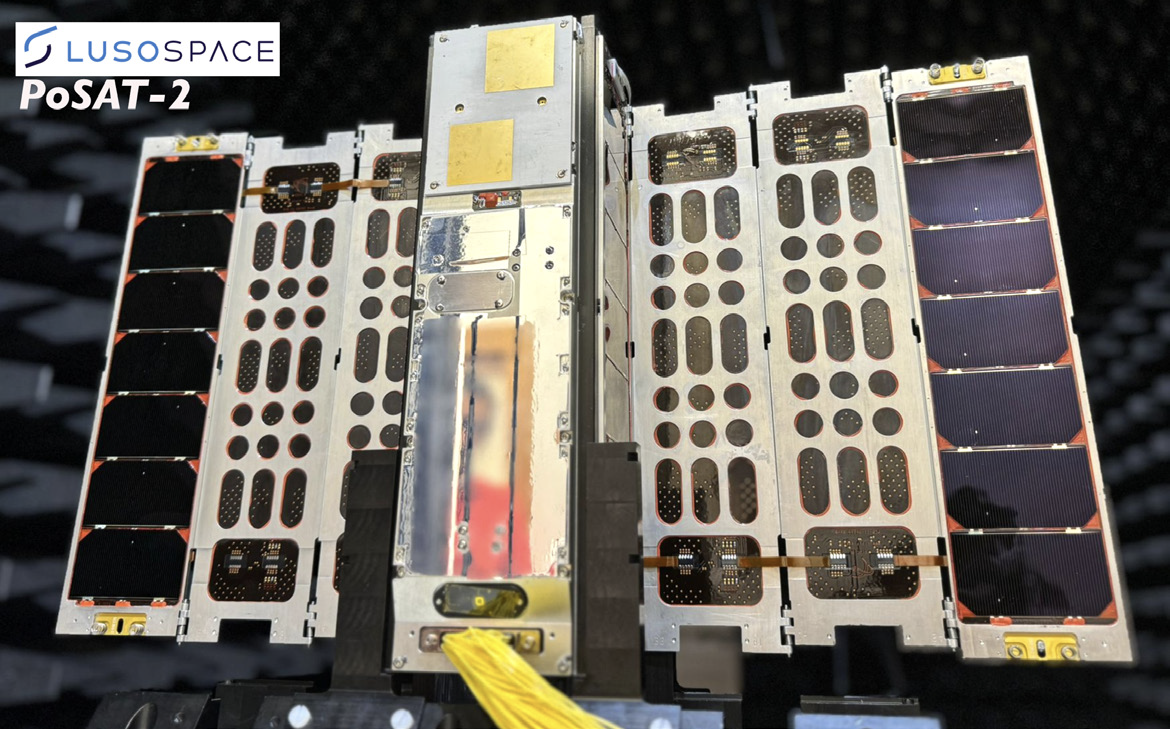
LUSOSPACE is in the development stages of a smallsat constellation for maritime communications and AIS/VDES. PoSAT-2 was developed by AAC Clyde Space.
PoSat-2 is Portugal’s first commercial satellite and is accompanied on the by PROMETHEUS-1that was developed by students from the University of Minho. Together with the start of the Atlantic Observation Network (ATON), which is a flagship global project for a smallsat constellation that will monitor the oceans, the Earth and the planet’s climate. Portugal sees its role as a major player in the new space economy strengthened, integrating capabilities for building, operating and marketing satellites and space services.
PoSAT-2 will pioneer the ATON constellation, which is expected to place 12 satellites in orbit by 2026 to provide maritime communication services. The project began with the support of the Portuguese Space Agency through the InCubed program promoted by the European Space Agency (ESA), which provided funding for the first feasibility study. Work then continued as part of the New Space Portugal Agenda, funded by the PRR.
According to LusoSpace, this project includes the introduction of VDES (Very High-Frequency Data Exchange System) technology in a satellite constellation. This technology allows two-way communication between land and ships, faster alerts, and encrypted messages, which has been unheard of until now. The benefits of the ATON constellation led to collaboration with the Navy to complement the naval communication system. After PoSat-2, the remaining satellites will be slotted into orbit at two separate times: in the last quarter of 2025 and at the start of 2026.
ISILaunch
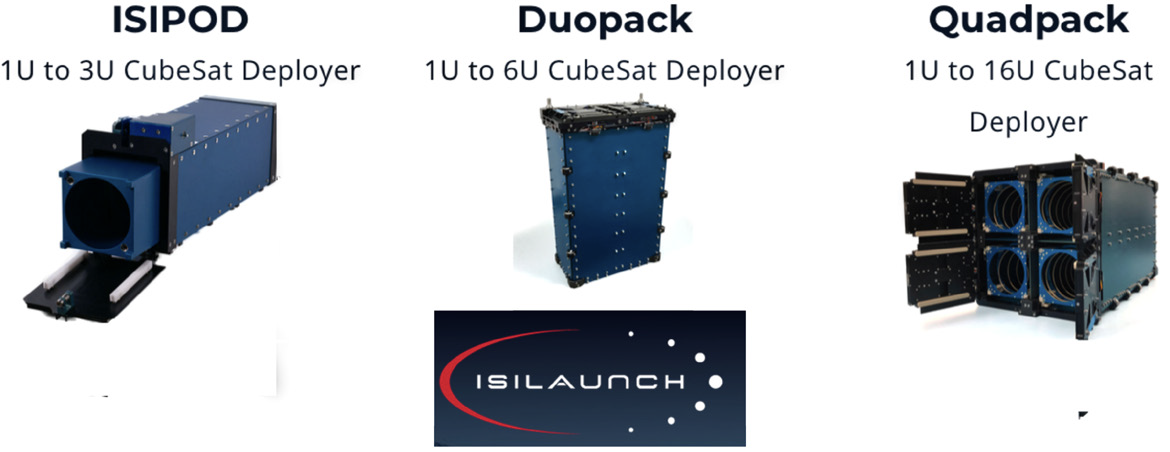
ISILaunch offers rideshare services for smallsats, with a total package that takes care of all of the aspects of the launch. To date, the firm has sent 659 cubesats and 2 microsatellites to orbit.
For cubesat launches, the firm uses their deployers that are available in sizes for 1U to 16U, including XL variants, and customization is also available for non-cubesat customers. The firm partners with ISISpace and offers to configure their M3S (Microsatellite Separation System), that is fully compatible with all launch vehicles, for the client satellite.
ISILaunch deployed the following smallsats to their orbits...
Ark Edge: AE1C and AE1D
BD Space: FUSION 1
INT/ESA: ANSER Leader-S
Pakistan Air University: PAUSAT1
Planet: SuperDove Flock 4G
TASA: PARUS-T1
K2 Space — K2 Space Component Mission
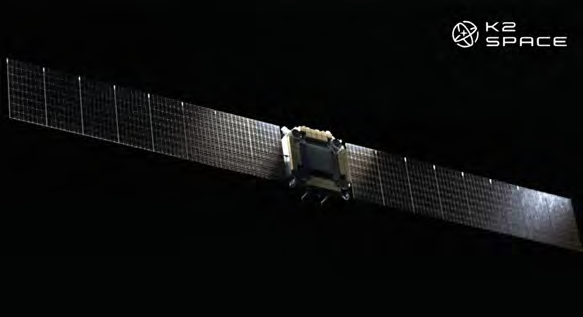
Including a flight computer, reation wheel and motor controller, this demo Mega Class satellite from K2 Space incorporates the firm’s in-house, designed bus compoents, which will also be used to build the full K2 satellite bus. Producing 20 kW of power, this unit can support as much as 1,000 kg in payload.
Maverick Space Systems
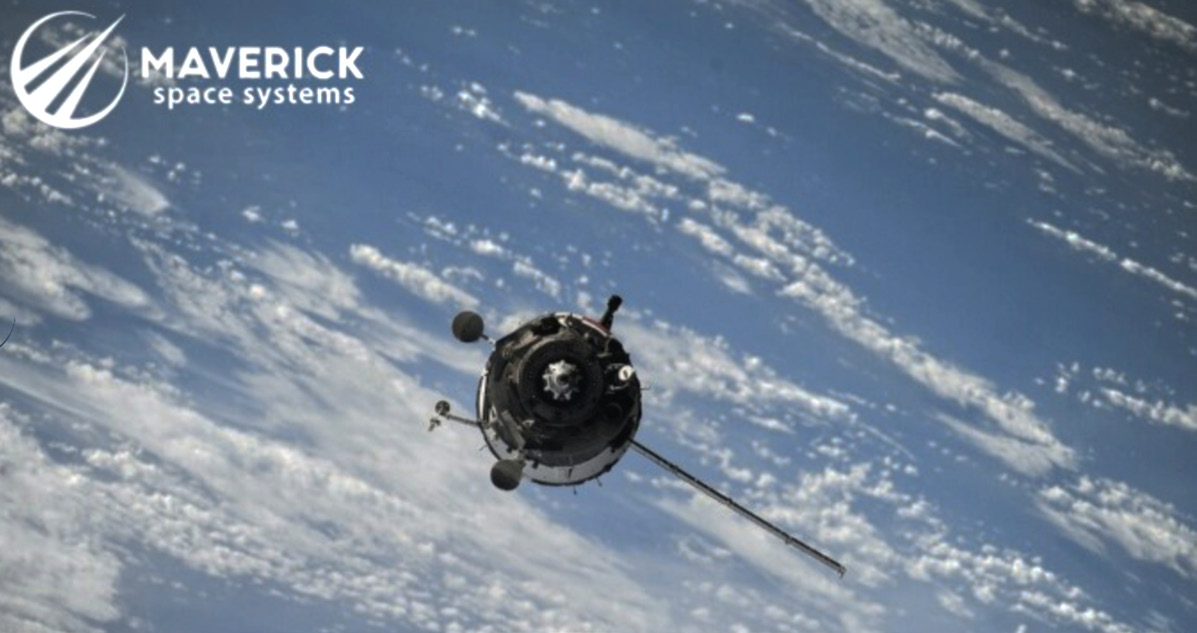
Maverick Space Systems used their deployment hardware, mission integration and launch brokering services to deliver client smallsats to orbit via the Transporter-12 mission. To date, the company has successfully completed 30 global launch campaigns.
The company provided the following companies the transportation to orbit...
NOVI: Lime
NASA: TechEdSat-22
Mohammed Bin Rashid Space Centre
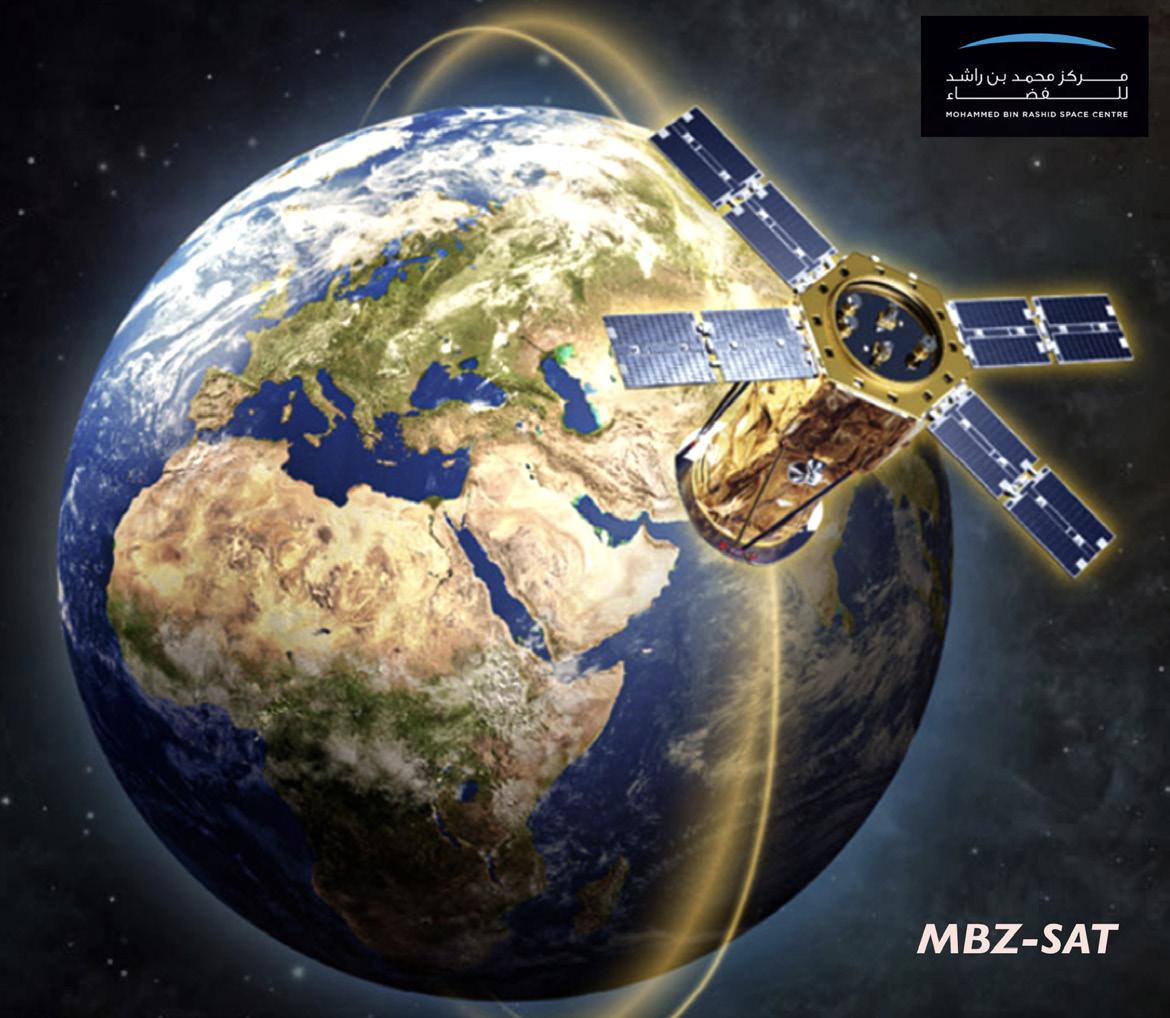
Mohammed Bin Rashid Space Centre’s MBZ-SAT satellite offers image capture accuracy that is twice as precise as its predecessors and generates ten times more imagery. These images will be processed and delivered in under two hours and provide insights for applications such as environmental monitoring, disaster relief, and infrastructure management.
The MBZ-SAT has a mass of 750 kg and will provide detaied images for a variety of applications such as monitoring the environment, disaster relief, navigation and infrastructure management.
HCT-SAT 1
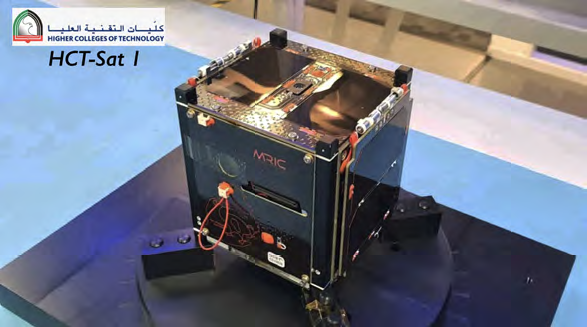
HCT-SAT1 is the first spacecraft designed by HCT students, with 34 involved in the development, assembly and testing of the satellite and nine faculty members contributing to the project. This 1U cubesat satellite is concentrating on Earth Observation (EO). The project was also a collaborative effort with the Mohammed Bin Rashid Space Cenre which allowed those seasoned professionals to work, hands-on, with the HCT students.
Inversion Space
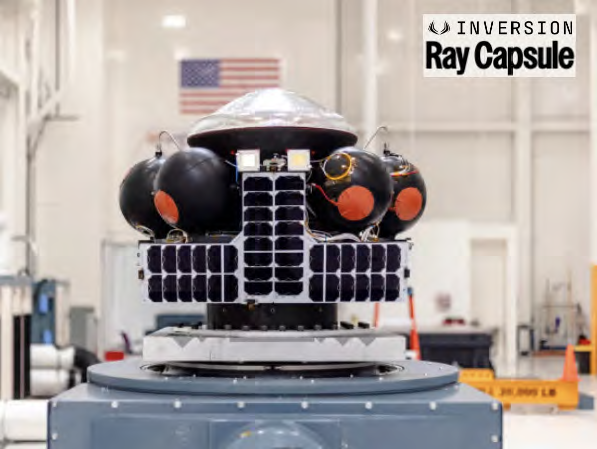
Inversion Space has launched their test mission, the Ray re-entry vehicle, that will engage in three mains phases: in-space operations, deorbit and re-entry, with the latter designed to capture data for the company’s upcoming, next-generation re-entry vehicles. The smallsat’s subsystems were developed in-house, and that includes the firm’s CE-1 deorbit engine and propulsion system.
Norwegian Space Agency
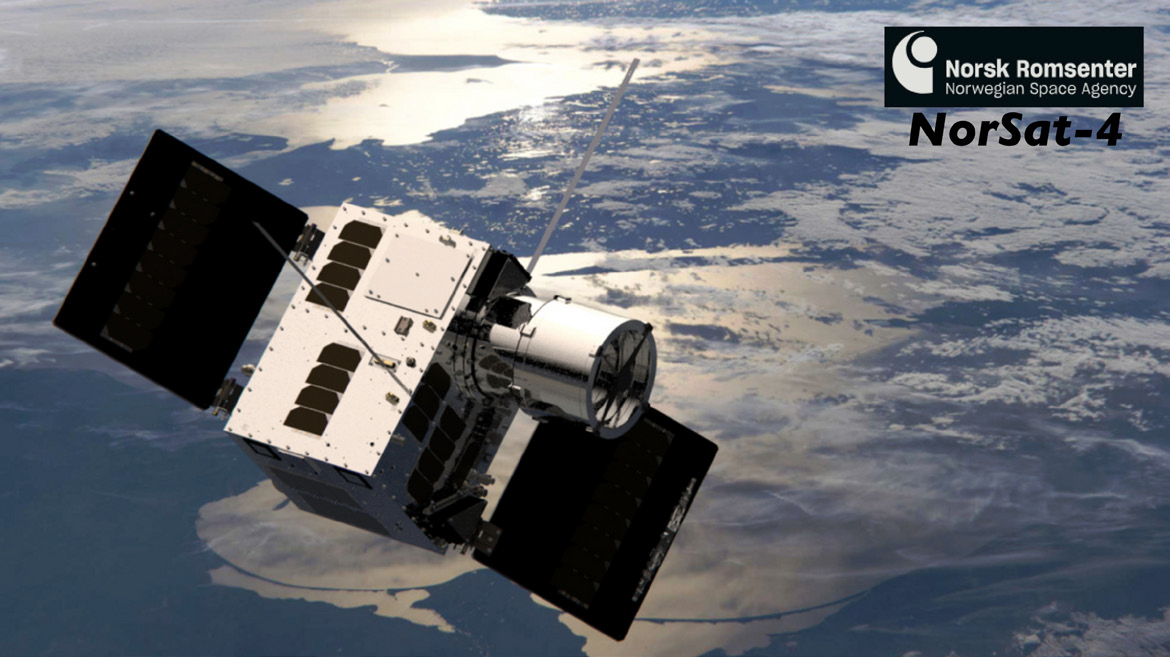
Norway’s new national satellite, NorSat-4 from the Norwegian Space Agency, is similar to the other national satellites NorSat-1, NorSat-2, and NorSat-3, will primarily monitor maritime traffic from orbit. In addition, NorSat-4 carries two other payloads onboard: a low-light camera and an encryption solution. Both are new technologies to be demonstrated in space.
NorSat-4 weighs approximately 35 kilograms and measures 76 x 83 x 43 centimeters when its antennas and solar panels are deployed. The main payload on NorSat-4 is a receiver that captures signals from the Automatic Identification System (AIS), a collision-avoidance system that all ships over 300 gross tons are required to have onboard.
AIS signals provide information on a ship’s position, speed, direction, and identification. Satellites use these signals to ensure safe maritime traffic, detect illegal fishing, smuggling, and other criminal activities, monitor borders, secure maritime areas, and more.
The Norwegian Coastal Administration owns and operates the AIS system for Norway and shares this information with other users.The AIS receiver on NorSat-4 is manufactured by Kongsberg Discovery and is the same type as those on the other national satellites, NorSat-1, -2, and -3. The satellite bus is from UTIAS SFL.
NOVI LIME
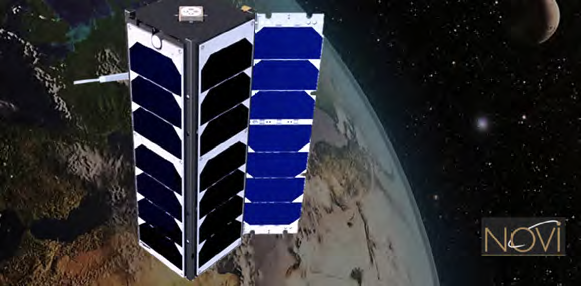
NOVI’s LIME is a 3U cubesat with theAI-enabled SP240 On Board Computer operating an experimental communications and state-of-health monitoring payload. The SP240 is built upon the AMD Versal ACAP SOC and VORAGO Arm® Cortex®-M4.
Orbital Astronautics Ltd.
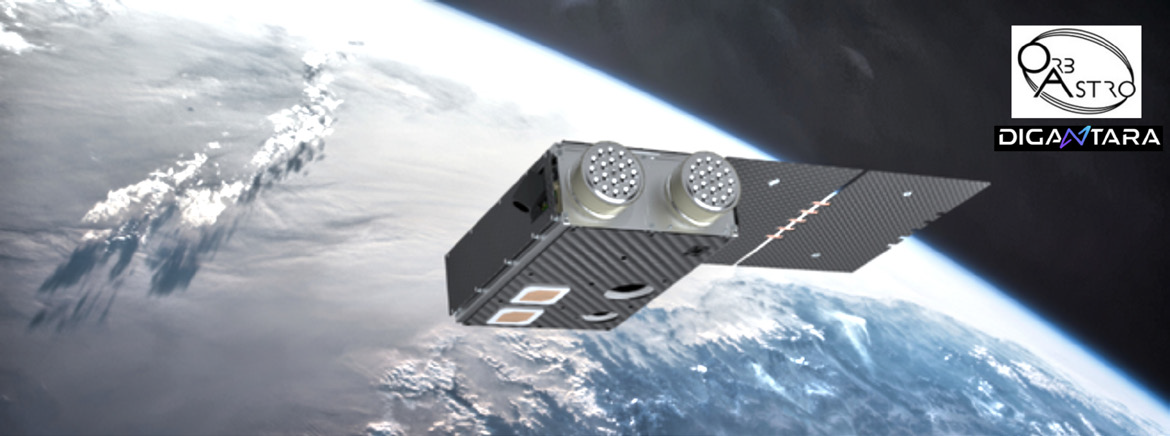
Orbital Astronautics Ltd., known as OrbAstro, developed the SCOTcubesat, which is one of the industry’s first Space SSA satellites, with a focus on traffic management optimization and national security initiatives. This 6U cubesat based on OrbAstro’s ORB-6 platform also packs in an Object Tracker sensor developed and produced by Digantara that will monitior space debris as well as space weather. Also from Digantara is a novel LiDAR-based technology that will pilot the smallsat and provide SSA awareness.
Beyond being a space-as-a-service provider geared toward nanosatellite and microsatellite constellations, OrbAstro is building an infrastructure to better service customer satellites—the Guardian Network that will provide low-latency access to customer satellites through an on-orbit data relay network, and it provides a high level of operations automation at the level. The OrbAstro satellite was distributed to orbit by the Exolaunch EXOpod Nova.
Ororatech
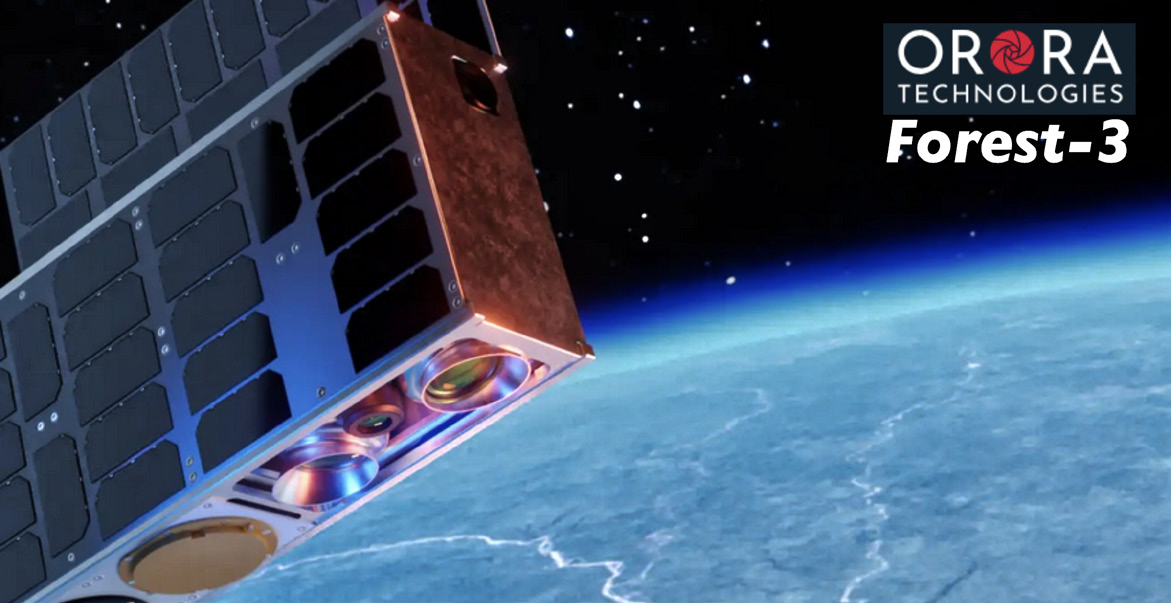
Ororatech is an intelligence-as-a-service company delivering thermal intelligence for a sustainable Earth and the firm has have established a network of sensors that continuously monitors the Earth’s temperature on a global scale. This is accomplished by the company flying groups of either satellites distributed within each orbit. This large number of smallsats can capture phtos at different times for a perfect location, making the outoutcome and the work far more efficient. The global revisit rate is every 12 hours, with development in the works to increase that rate to 30 minutes in 2026.
ITU-USTTL
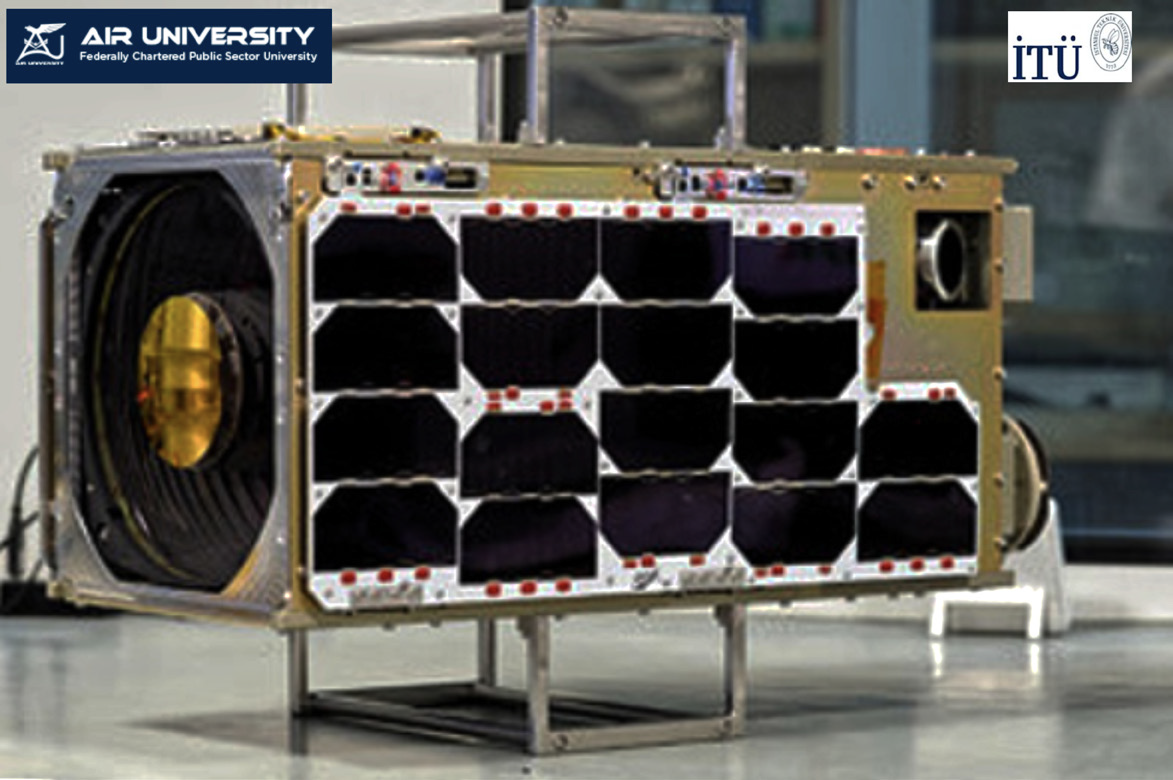
PAUSAT-1, the 8th satellite made by ITU-USTTL, was designed and developed in collaboration with Pakistan Air University. The satellite was successfully placed into its orbit at 500 km as part of the SpaceXTransporter 12 mission
With the successful placement of PAUSAT-1, designed and developed in collaboration with ITU and Pakiston Air University, a total of 8 Turkish-made satellites have been successfully placed in Earth’s orbit as of January 14.
The PAUSAT-1 cubesat, with a ground sampling resolution of 1.5 meters and a size of 16U (24 kg), is among the largest and most advanced cubesats in the world. The university can track our satellites with ITU UHUZAM (ITU Center for Satellite Communications and Remote Sensing), the first satellite ground station in Türkiye, which holds a significant global position.
Pixxel
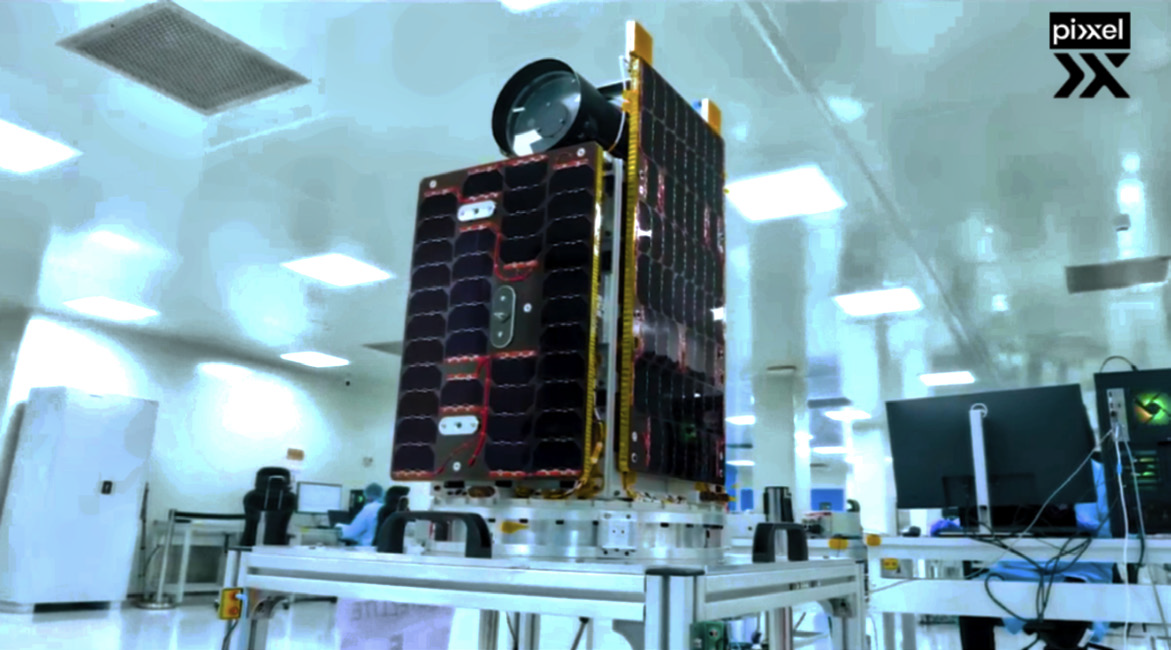
Pixxel successfully launched the first three Firefly smallsats to SSO to join the on-orbit Pixxel constellation. These Firefly smallsats offer high-resolution, commercial-grade, hyperspectal imaging capabilities with a 5 meter resolution and they can capture data across 150+ spectral bands.
Plan-S
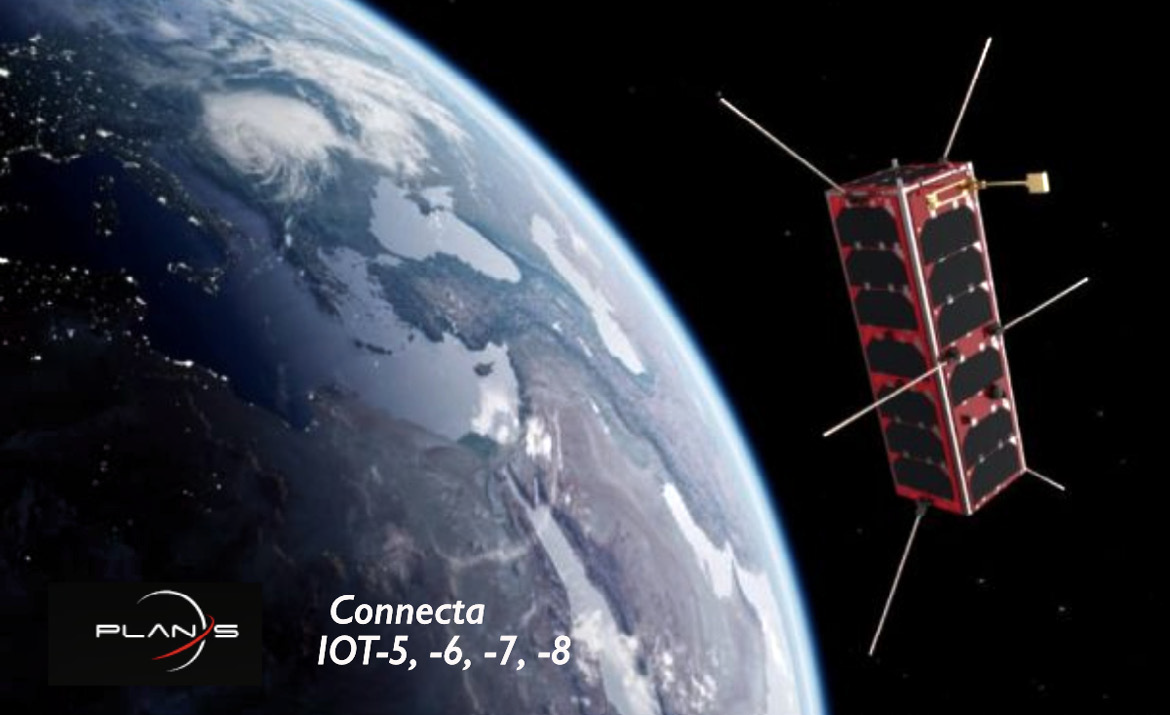
Plan-S aims to use space-based technologies to increase agricultural productivity, improve disaster management, conduct environmental monitoring and optimize urban planning. The company is a private initiative in Türkiye’s space technology industry, prioritizing innovation and commercialization in satellite technology.
The company designs satellites for IoT connectivity and Earth Observation (EO), such as their Connecta product family. These IoT smallsats offer global energy monitoring, improving agriculture with data analysis, aiding in transport security, providing environmental disaster response, ensuring maritime security, and supporting risk assessment and fraud prevention through the use of sensors and data analytics.
Planetek Italia
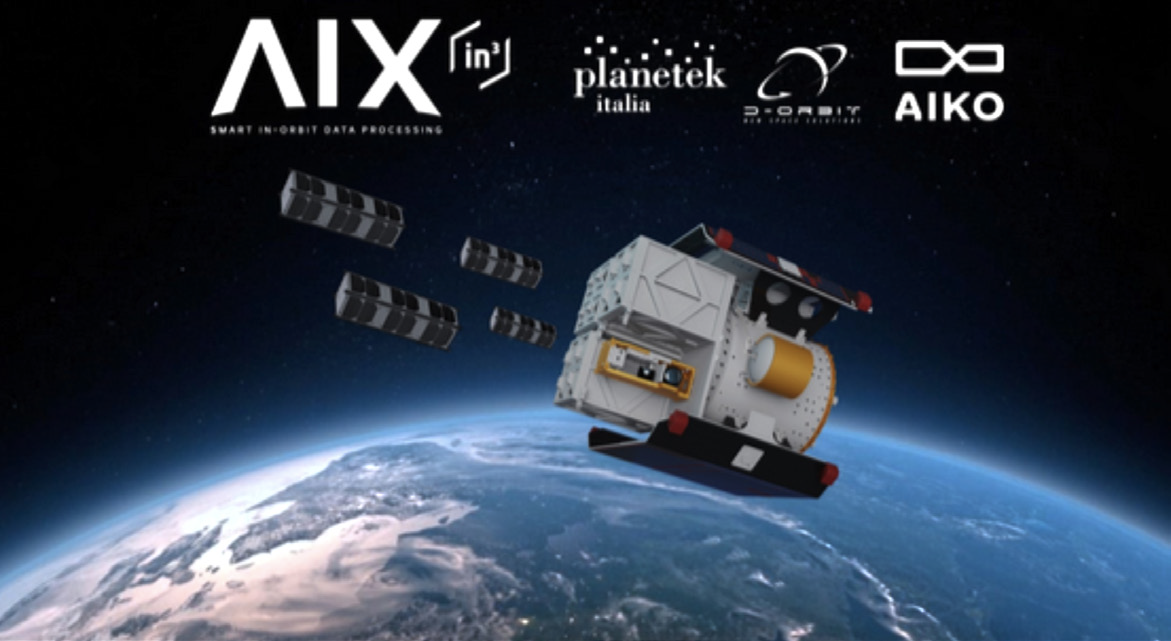
The AIX-1p satellite, the cornerstone for the Planetek Italia’s digital EO constellation, will bring a new concept of cognitive cloud computing in space. This smallsat, co-funded by ESA’s InCube EO program, is designed to test and validate the core building blocks of fundamental software services (data processing and execution) directly in space.
Orbiting at 520 km, this is the first of a series of three satellites (AIX-1p, AIX-1, and AIX-1+) that are scheduled to launch this year in June and October and form the backbone of the “Satellite-as-a-Service” model. and were developed by the company with partners D-Orbit and AIKO.
AIX-based services will be tested and deployed using D-Orbit’s ION platform and space cloud infrastructure, AIKO’s orbital_OLIVER autonomy framework and AI applications, and Planetek’s SPACEDGE™ Earth Observation services for FutureEO.
Planet
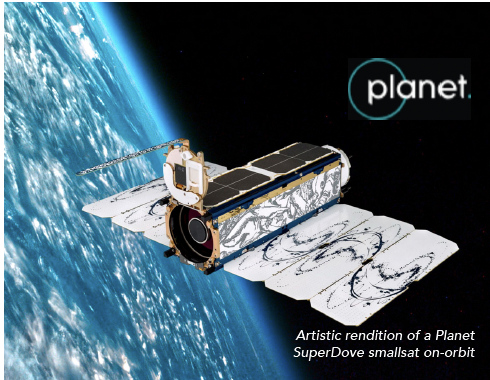
Planet’s high-resolution Pelican-2 satellite and 36 Flock 4G SuperDoves were delivered to orbit. Pelican-2 satellite joins Pelican-1 (a smallsat launched last year) as part of Planet’s next-generation, high-resolution fleet, to support and expand its existing SkySat capabilities. Pelican-2 will provide up to 40 cm class resolution imagery across 6 multispectral bands optimized for cross-sensor analysis. Planet collaborated with NVIDIA to equip Pelican-2 with the NVIDIA Jetson platform to power on-orbit computing. Planet plans to launch additional Pelicans this year.
Using data from Planet’s constellation of hundreds of Dove satellites, more than 2,700 images (on average) for every point on Earth’s landmass have been collected. The 36 SuperDoves will replenish the company’s current on-orbit fleet of approximately 200 satellites to scan the Earth every day.
Each Planet SuperDove is equipped with eight spectral bands that provide users with accurate, consistent and analysis-ready data.
Pelican-2
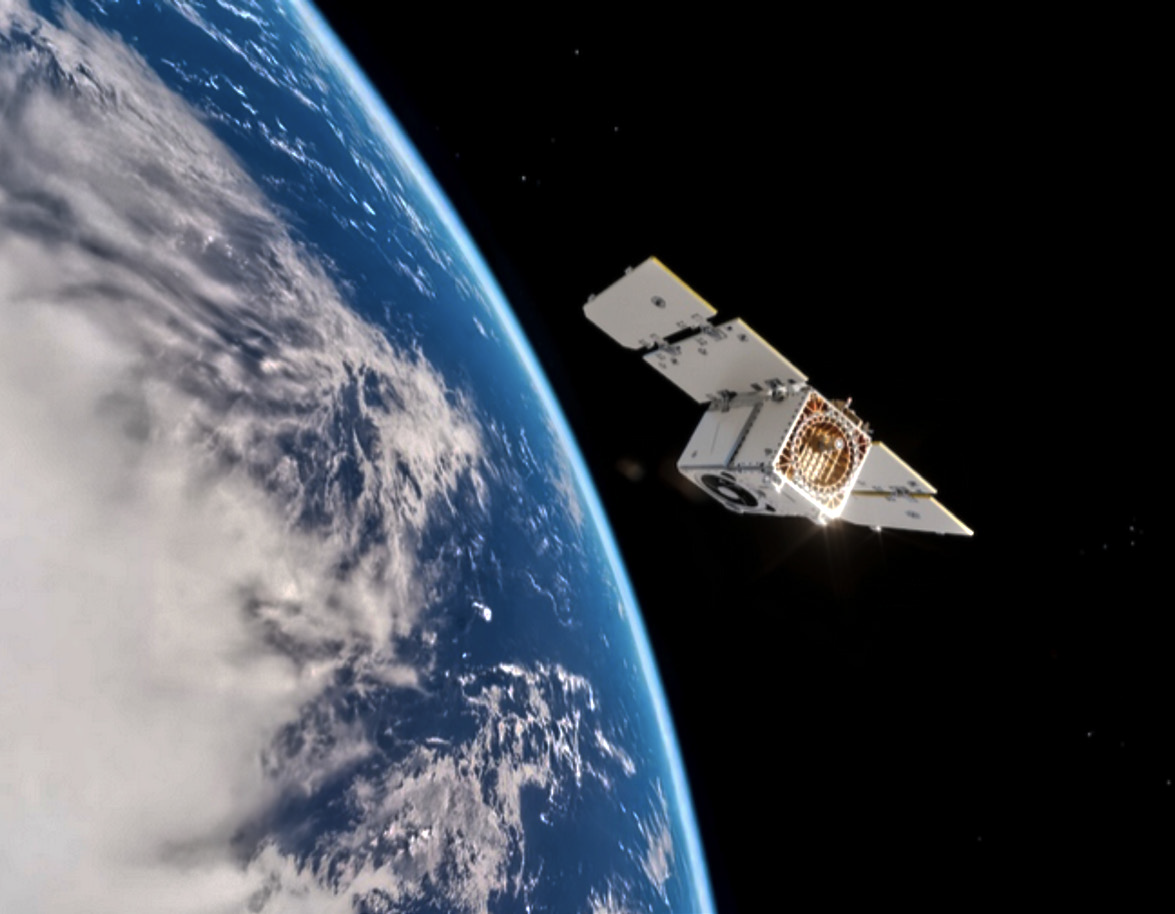
Pelican-2 will provide up to 40 cm class resolution imagery across 6 multispectral bands optimized for cross-sensor analysis. Planet collaborated with NVIDIA to equip Pelican-2 with the NVIDIA Jetson platform to power on-orbit computing. The goal is to reduce the time between data capture in a timely manner for customers. Planet plans to launch additional Pelicans this year.

